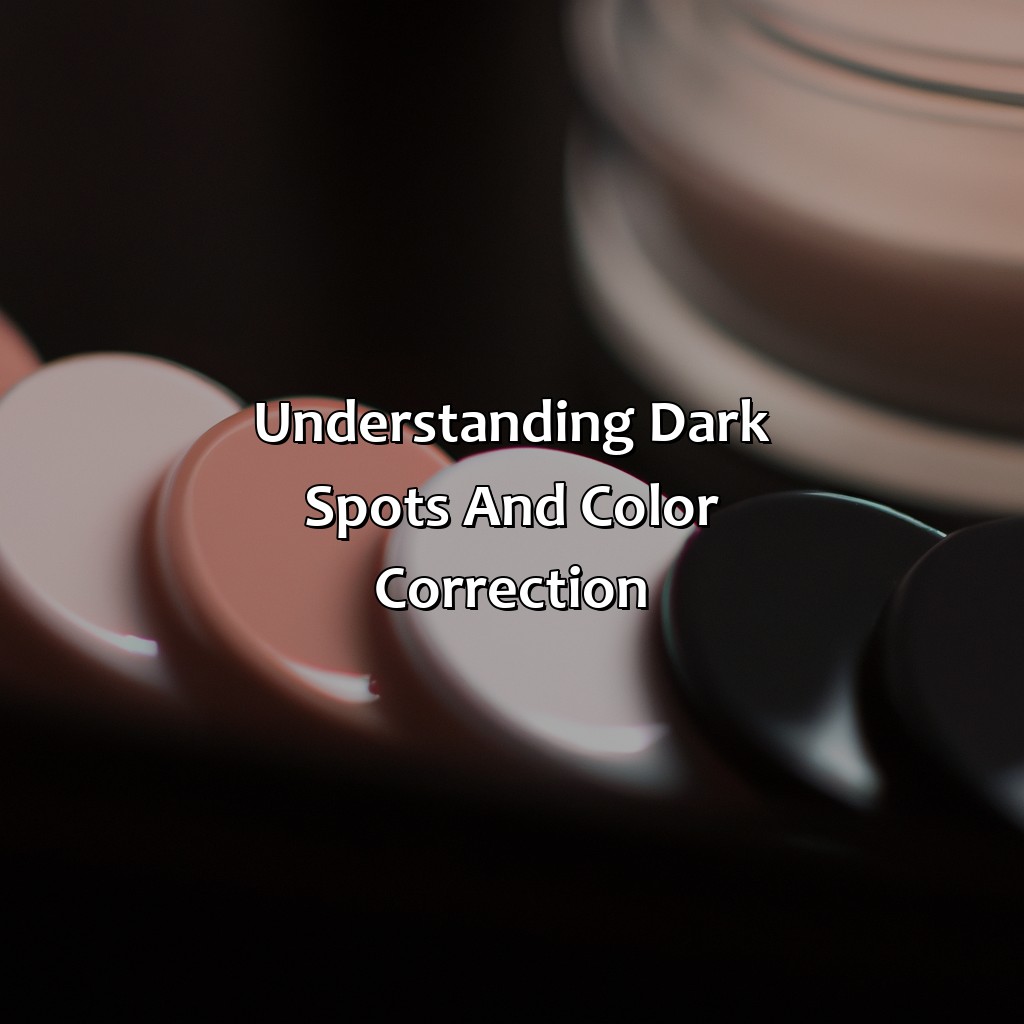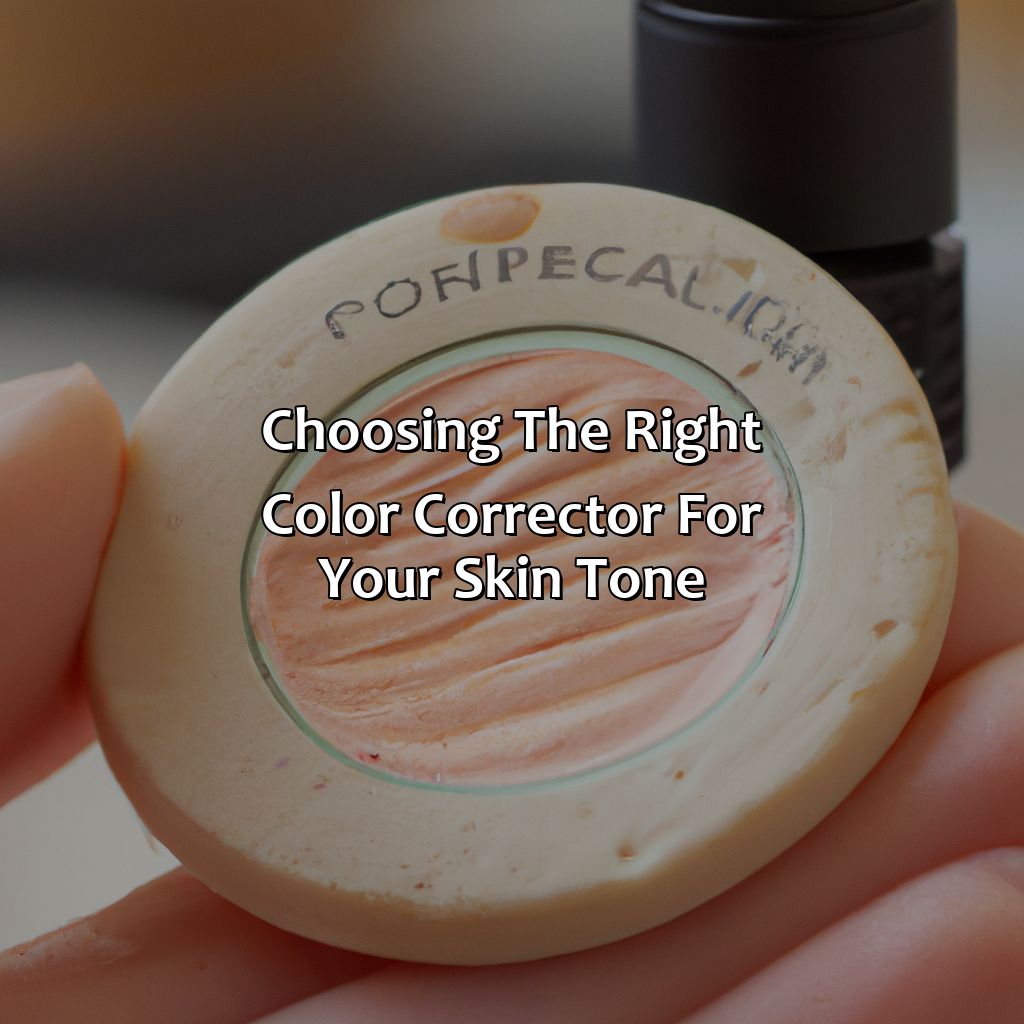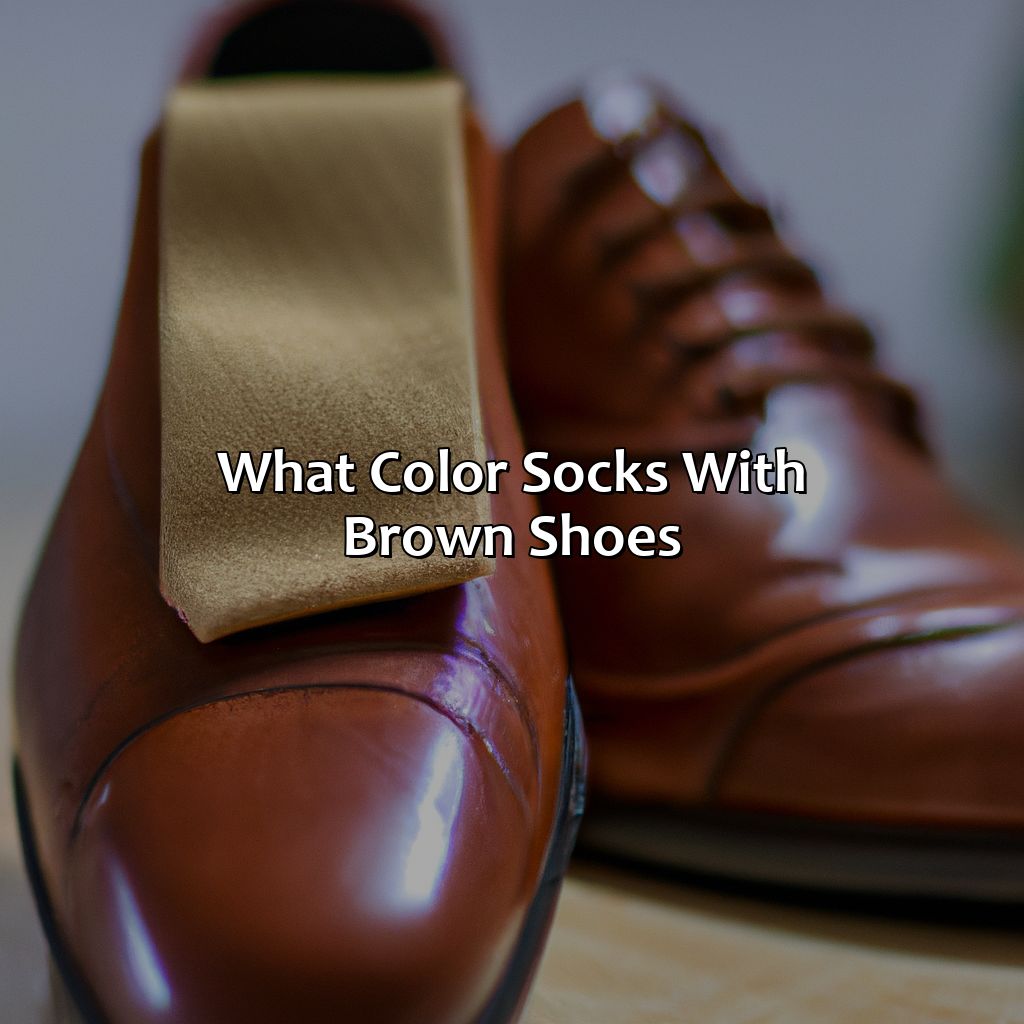Key Takeaway:
- Color correctors help to even out skin tone by reducing the appearance of dark spots caused by hyperpigmentation, under-eye dark circles, sun damage, or acne scars. They come in different forms, such as concealer, tinted moisturizer, BB cream, CC cream, and makeup, and with different color undertones, such as green, peach, salmon, yellow, purple, or red/orange, depending on the type of dark spot and skin tone.
- Green color correctors are suitable for redness, acne, or rosacea-prone skin, as they neutralize redness and even out complexion. Peach/salmon color correctors are ideal for neutralizing dark circles or brown spots, especially on fair to medium skin tones. Yellow color correctors work well for correcting dullness or sallowness, particularly on medium to deep skin tones. Purple color correctors are great for neutralizing yellow undertones or brightening dull skin, especially on fair or light skin tones. Red/orange color correctors are best for neutralizing blue or purple undertones, such as under-eye veins or bruises, especially on deeper skin tones or olive complexions.
- Choosing the right color corrector for your skin tone involves identifying the most prominent type of dark spot and considering the undertone of your skin. Fair skin tones should opt for lighter color correctors, while deep skin tones can go for richer or deeper shades. Spot or over-all application techniques can help blend and layer color correctors for a seamless finish. To enhance the effectiveness of color correctors, it’s important to incorporate skincare products with natural ingredients, such as aloe vera, vitamin C, or glycolic acid, into your routine, or to seek professional treatments, such as chemical peels, microdermabrasion, or laser therapy.
Understanding dark spots and color correction

Photo Credits: colorscombo.com by Stephen Smith
Dark spots are a common skin concern caused by hyperpigmentation. Color correction, using a dark spot corrector, is a technique to balance skin tones. For under eye dark circles, a peach or pink-based corrector creates a brightening effect. Understanding the underlying causes and types of hyperpigmentation is crucial in selecting the right shade of color correction. By using color theory, a complementary shade can neutralize dark spots. Using a well-formulated corrector that contains ingredients like vitamin C, niacinamide, and kojic acid can also diminish the appearance of dark spots. A study published in the Journal of Cosmetic Dermatology highlighted the efficiency of topical niacinamide in improving hyperpigmentation.
Different types of color correctors for dark spots

Photo Credits: colorscombo.com by Noah Lopez
Having difficulty managing dark spots? Fear no more! This section will aid you in understanding the various color correctors available. Five sub-sections, each focusing on a different shade, are present. Green, peach/salmon, yellow, purple, and red/orange will be discussed. Primers, concealers, and makeup products are part of these solutions!
Green color correctors
Correcting discoloration with green color correctors is a popular technique among makeup users. Green color correctors work by neutralizing redness on the skin, making it an excellent option for those with blemishes or acne scars.
- Green corrector comes in various forms from color correcting primer to color correcting concealer
- A color correcting palette typically includes multiple shades of green that can be used to adjust the intensity of the correction
- When using a green corrector, it’s essential to apply it sparingly and blend it thoroughly into the skin
- Always test your chosen product on a small area before applying it all over your face or affected areas.
A green color corrector can also mitigate the effects of rosacea, eczema, and sunburns. This product may not be needed for all skin types or concerns. Consult with a dermatologist or makeup professional before trying any new products.
Pro Tip: Blend green color correctors precisely onto targeted problem areas to achieve even coverage and better results.
Cover up your dark spots with a salmon corrector and transform into a bright-eyed, bushy-tailed salmon.
Peach/Salmon color correctors
- Peach and salmon correctors neutralize the blue and purple shades, creating a natural-looking glow on the skin
- These color correctors are formulated with warm tones that counteract cool tones
- This shade of corrective makeup suits fair to medium skin tone types the best
- Peach/salmon correctors work well for covering under-eye circles as well as hyperpigmentation or melasma with a bluish or purplish tint.
It is important to avoid using bright peach/salmon correctors on darker skin tones, as it may appear ashy and unnatural. Instead, use deeper orange-based shades.
Using peach/salmon correctors can be tricky, hence it is recommended to start with a small amount and build up coverage gradually. By doing this, you can avoid applying excessive amounts of product resulting in an unnatural appearance.
Don’t miss out on using Peach/Salmon color correctors if you have dark spots with blue or purple undertones. Incorporate them into your daily makeup routine for flawless-looking skin.
Yellow correctors: because nothing screams ‘I got enough sleep last night’ like a banana-colored face.
Yellow color correctors
To achieve an even skin tone, yellow correctors are perfect for dealing with dark spots. Yellow correctors work wonders on all skin tones and types due to its neutralizing effect on the skin’s redness.
Yellow Correctors:
- Helps in reducing the appearance of age spots.
- Neutralizes purpleish-bluish shades under eyes.
- Evens out the redden areas from broken blood vessels and acne marks.
- Perfect for balancing self-tanner effects.
A unique property of yellow correctors is that they provide a brightening effect without looking like there is any product on your face.
Pro Tip: It’s best to use a light hand while applying yellow corrector as over-application can give you an unnaturally yellow hue. If you want to look like a grape, opt for a purple corrector to combat dark spots.
Purple color correctors
Purple correctors are a type of color corrector used for dark spots on the skin. They are designed to neutralize yellow and brown tones, making them ideal for correcting under-eye circles and dullness.
- Purple correctors work best on fair to medium skin tones.
- They have a cool undertone that counteracts warm colors.
- To use a purple corrector, apply it sparingly under foundation or concealer.
- A little goes a long way with purple correctors, so start with a small amount and build up as needed.
- Purple correctors should be blended carefully to avoid looking ashy on the skin.
When using purple correctors, it’s important to consider the depth of your dark spots. If your dark spots are especially deep, it may be necessary to layer a heavier coverage product over your color correction.
Purple correctors have been used by makeup artists for years to create flawless-looking skin in photoshoots and red carpet events. The color helps to brighten dull skin and add radiance to any complexion.
Looking like a traffic cone may not be stylish, but it’s worth it for the redness-reducing power of these color correcting concealers.
Red/Orange color correctors
Red/Orange Color Correctors are a type of color correcting concealer that helps to diminish or neutralize the appearance of dark circles and hyperpigmentation with red or orange undertones. Here are six essential points about these color correctors:
- Red/Orange color correctors work best for individuals with deep skin tones, as they effectively neutralize blue and purple discoloration.
- These shades can also be used on lighter skin tones to counteract blue-toned blemishes like bruises.
- Red and orange cancel out darkness by creating a more balanced tone in the area.
- These shades blend easily with other products and work well under foundation or concealer for long-lasting coverage.
- For maximum benefits, it is recommended to apply these shades with a small brush or clean finger in thin layers until desired coverage is achieved.
- Some good options for red/orange color correctors include the Make Up Forever Step 1 Skin Equalizer Primer (Caramel), the NYX Professional Makeup Color Correcting Concealer (Orange), and the Sephora Collection Bright Future Color Corrector (Melon).
It’s also worth noting that while red/orange color correctors work well for many types of discoloration, some people may find that peach/salmon color correctors work better for them in specific situations. One shade does not fit all: Here’s how to choose the right color corrector for your unique skin tone.
Choosing the right color corrector for your skin tone

Photo Credits: colorscombo.com by Bobby Lewis
Fair skin has its own needs for color correction. And, for those with medium or dark skin, they may need a special product to address their concerns. So, when deciding which color corrector is right for your skin tone – take into account your particular fair, medium, or dark color.
Fair skin
For those with fair skin, choosing the right color corrector for dark spots can be tricky. It’s important to select a color that won’t appear too harsh or stark against your skin tone. Peach/salmon color correctors are great for balancing out the blue and purple tones found in fair skin’s hyperpigmentation and dark circles. Yellow correctors are also a good choice to cancel out redness and lighten up the overall appearance of dark spots. When using color correctors on fair skin, it’s essential to use a light hand and gradually build up coverage to avoid any unnatural or heavy-looking results.
To truly perfect the art of color correction, consider investing in professional-grade products especially designed for fair skin tones. Some popular options include brands like Bobbi Brown, NYX, and YSL Beauty.
Don’t miss out on achieving your best complexion yet – experiment with different colors until you find what works best for you!
Finding the right color corrector for medium skin is like navigating a minefield, but don’t worry, we’ve got your back.
Medium skin
Skin tone plays a significant role in choosing the right color corrector for dark spots. Medium skin tones usually have a yellow or olive undertone, which makes them vulnerable to hyperpigmentation caused by acne scars and sun damage. Therefore, peach/salmon color correctors can be an excellent option for medium skin as it neutralizes the blue-green hues of dark under-eye circles and acne scars.
To cover the medium skin, we focus on skin types that fall between fair and dark tones. Medium skin is characterized by warm or neutral undertones with consistent hue throughout the body. Neutralizing dark spots requires proper selection of color corrector depending on the type of pigmentation.
It’s worth noting that every individual is unique, and their medium skin may not always fit into one specific category when choosing a color corrector. However, experts suggest peach-toned concealers are best suited to light/medium skin tones with yellow undertones to cancel out gray/blue pigmented blemishes like under-eye circles, age spots, and melasma.
Many people with medium skin are often prone to hormonal breakouts leading to post-inflammatory hyperpigmentation (PIH). A good color correcting technique would be using green or yellow tinted primer/concealer underneath foundation/bb cream for PIH scars; this will counteract redness brought about by acne marks.
Historically, makeup brands would design one-size-fits-all complexion products. However, with new technology-driven advancements in beauty products for diverse shades, there is now plenty of choice available to suit different complexions’ needs.
If you think finding the right color corrector for dark spots is hard, try finding one for every shade from fair to deep.
Dark skin
For individuals with deeper skin tones, color correction is an essential step in achieving even-looking skin. Several color correctors work well for black, brown, and deep skin tones. The key is selecting the right one for your unique pigmentation.
Green color correctors work excellent on darker skin tones to counteract any redness or irritation. Peach/salmon, yellow, and purple are also suitable options. Peach/salmon can help brighten areas affected by hyperpigmentation while yellow works well on dark circles or dullness. Purple correctors add luminosity to even out the overall complexion.
Medium to deep skins should consider using orange/red-colored correctors to cancel out dark spots or acne scars. Fairer skin may not need as intense of a shade but rather a lighter peach/orange tint.
When applying color correctors on darker skin tones, dabbing the product directly onto individual spots may achieve the best results instead of an overall layer of color-correcting primer or foundation.
Blending multiple shades of color corrector on specific areas can provide extra coverage while keeping a natural finish. Try layering peach and purple around melasma spots to create a seamless blend.
Some excellent options for black/brown/Asian/deep skinned individuals include the MAC Studio Finish Skin Corrector in “Deep Peach,” NARS Radiant Creamy Concealer in “Amande,” Makeup For Ever Full Cover Concealer in “Cognac,” and Black Opal’s Color Splurge Color Corrector Primer in “Deep.”
Applying color corrector to dark spots is like playing connect the dots, but with makeup.
Techniques for applying color corrector to dark spots

Photo Credits: colorscombo.com by Ronald Campbell
Mastering the art of color corrector for dark spots requires knowledge. Spot application means targeting the discolored area directly with the color corrector. On the other hand, overall application involves a different approach. To learn how to apply color corrector correctly, break down the sub-sections.
Spot application
To apply color corrector to specific dark spots, spot application can be used. This technique involves using a small brush or applicator to target individual areas of discoloration on the skin. Spot application allows for precise coverage and can effectively conceal hyperpigmentation, age spots, and acne scars with the use of appropriate color correction shades.
When using spot application, it is important to choose the right shade of color corrector based on your skin tone and type of dark spot. It is also recommended to blend the product thoroughly into the surrounding skin for a seamless finish.
For best results with spot application, experts suggest starting with a small amount of product and building up coverage as needed. Pat or dab the product onto each targeted area rather than rubbing it in to avoid shifting or removing the product from the designated spot.
Historically, spot application has been practiced by professional makeup artists and estheticians as an effective technique for covering blemishes and imperfections on clients’ faces before photoshoots or events. Today, this method has become increasingly popular among everyday makeup wearers as a way to camouflage dark spots on a daily basis.
Go big or go home- the overall application method for color correctors is not for the faint of heart.
Over-all application
To apply color corrector for dark spots, an over-all application can be done for a more even skin tone. By using a blending sponge or brush, the color corrector can be lightly applied all over the face to provide better coverage of larger areas with discoloration. Make sure to blend properly and avoid over-application as it may result in an unnatural look.
It is advisable to apply foundation and concealer after the over-all application of color correctors to ensure seamless blending and achieve a flawless finish.
Interestingly, according to a study published by the Journal of Cosmetic Dermatology, “color correction can reduce hyperpigmentation appearance without compromising natural skin tone.”
Blend it like Beckham: The ultimate makeup hack for flawless color correction.
Tips for blending and layering color correctors

Photo Credits: colorscombo.com by Jose Brown
Color correctors are a great addition to any makeup routine for covering dark spots. Blending and layering correctors can be tricky, but it can make all the difference in achieving a flawless finish. Here are some makeup tips for blending and layering color correctors for dark spots in a skincare routine:
- Cleanse your face thoroughly and apply a moisturizer that suits your skin type.
- Apply your foundation or concealer before the color corrector to reduce the number of layers needed.
- Choose a color corrector that matches your skin tone and is one to two shades lighter than your foundation. Apply a small amount to the dark spot and blend it using a dabbing motion with your fingers or a brush.
- Layer a concealer that matches your skin tone on top of the corrector and blend it again.
Do keep in mind that using a color corrector alone may not give you the desired results. You need to follow up with a skin care routine that comprises of regular exfoliation and sunscreen application to get rid of dark spots permanently.
As with anything makeup-related, practice makes perfect. Don’t be afraid to experiment with different shades and amounts of color corrector for a customized effect.
For those who have struggled with dark spots for a long time, using color correctors can be a real game-changer. A friend of mine has always had skin contouring issues due to sun exposure. She shared how she never felt confident enough with her bare skin until she tried color correctors. By using different shades, she was able to achieve a natural-looking finish that was perfect for her skin type, and now she can confidently face the world with a skin tone that’s even and spot-free.
Best color correctors for different types of dark spots

Photo Credits: colorscombo.com by Bobby Harris
To treat dark spots? Get the best color correctors! Check out our section: “Best color correctors for different types of dark spots”. Discover how to win the battle against hyperpigmentation, acne scars, and sun damage. Each sub-section has unique words that will help you find a solution for your skin concerns.
Hyperpigmentation
Dark spots are a common concern among people with varied skin types and tones. Hyperpigmentation refers to the darkened areas caused by increased melanin production in certain parts of the skin. Treatment for hyperpigmentation involves the use of color correctors to neutralize the discoloration.
When it comes to treating hyperpigmentation, different types of dark spot correctors work best for specific types of pigmentation. Peach or salmon correctors are ideal for age spots and melasma, while green correctors help cancel out redness caused by acne scars. Yellow correctors help brighten dull skin and reduce the appearance of freckles, while purple ones cancel out yellow undertones on uneven skin tone. Red or orange color correctors work well for deeper pigmentation.
It is essential to choose color correctors that match one’s skin tone. For fair-skinned individuals with light pigmentation, yellow and peach tones work best, whereas those with medium or tan complexions can opt for peach or orange-based formulas. Darker skin tones benefit from warm oranges and deep peach shades that contain red pigment.
Applying a small amount of color correction specifically onto each dark spot helps achieve an even makeup application without piling too much product onto your face. Another technique is mixing foundations with color corrector before applying all over for a more subtle result.
One should layer thin coats of color correction under foundation gradually built-up coverage until they achieve the desired effect while blending properly between layers.
Best corrective ingredients include niacinamide, kojic acid, alpha hydroxy acids as they have shown significant promise in treating hyperpigmentation by inhibiting melanin production in cells that cause skin discoloration.
Say goodbye to acne scars with these holy grail products that will make it disappear faster than your ex.
Acne scars
Dark spots caused by acne scars are a common skin concern. Acne scars can leave hyperpigmentation or discoloration on the skin, making it look uneven and dull. Color correctors can help in masking these dark spots by neutralizing the underlying tones.
Using yellow color correctors can help in balancing out the purple or blue undertones of acne scars, giving the skin a more even complexion. Spot application is recommended for acne scars to avoid adding too much color to an area that might not need it.
It’s essential to choose a color corrector based on your skin tone and unique requirements to achieve optimal results. For fairer skin tones, using a peach/salmon-based color corrector works better as it helps to cancel out any blue undertones from acne scars. However, for darker complexions, using red/orange shades helps significantly in neutralizing the dark spots.
Studies show that using vitamin C-based serums along with topical treatments can improve pigmentation caused by acne scars over time. (Source: NCBI)
Incorporate color correction techniques into your skincare routine based on your specific skin concerns to achieve smooth and flawless skin effortlessly. When it comes to sun damage, prevention is key, but a good color corrector can definitely help undo some of the damage done.
Sun damage
Excessive UV exposure causes damage to the skin leading to pigmentation changes. This is a common issue during summer months for all skin types. Cosmetics and dermatology offer various color correction solutions that help even out sun-induced texture changes.
For sun-damaged spots, it is recommended to use color correctors with peach or yellow undertones depending on how dark the spot is. Peach-toned color correctors are recommended for lighter spots, while yellow-toned ones work better on darker spots. Applying these colors as a concealer base before foundation application helps create an even complexion.
Applying a physical sunscreen along with the color corrector helps protect against further harm and retains pigment balance. Doing this step would also ensure adequate hydration in your skincare routine.
A Pro Tip involves checking the percentage of Zinc-Oxide or Titanium-Dioxide in your sunscreens as these ingredients provide immediate protection from the sun rays by sitting atop your skin as physical barriers rather than being absorbed into the skin like chemical sunscreens.
Some Facts About What Color Corrector for Dark Spots:
- ✅ Color corrector for dark spots is a type of makeup product that helps to neutralize discoloration on the skin. (Source: Byrdie)
- ✅ It is best to choose a color corrector that is opposite to the color of your dark spot on the color wheel. (Source: Elle)
- ✅ Green color corrector is best for red or pink pigmentation, while peach or orange is ideal for darker spots. (Source: InStyle)
- ✅ Color corrector should be applied before foundation for smoother and more even-looking skin. (Source: Health)
- ✅ Regular use of color corrector can help minimize the appearance of dark spots over time. (Source: Harper’s Bazaar)
FAQs about What Color Corrector For Dark Spots
What color corrector for dark spots should I use?
When it comes to dark spots, the best color corrector to use is one that is opposite to the color of your dark spots on the color wheel. For example, green correctors can help neutralize redness, while peach and orange correctors can help counteract the bluish-purple tones often found in under-eye circles. For dark spots specifically, yellow and peach correctors work best.
How do I choose the right shade of color corrector for my dark spots?
The key to choosing the right shade of color corrector is to go for one that is slightly lighter than your skin tone. This will help to brighten and illuminate the skin while also neutralizing the color of your dark spots.
Can I use color corrector for dark spots alone or do I have to apply foundation as well?
While you can use color corrector for dark spots alone, it’s always best to apply foundation afterwards to help even out your skin tone and create a flawless finish. Just make sure to blend the color corrector and foundation together seamlessly for the best results.
How often should I use color corrector for dark spots?
You can use color corrector for dark spots as often as you like, but it’s important to remember that it’s not a long-term solution. To truly treat dark spots, it’s important to start with a good skincare routine and incorporate ingredients that target pigmentation like vitamin C, niacinamide, and alpha hydroxy acids.
Can color corrector for dark spots clog pores or cause breakouts?
If you choose the right formula and apply it correctly, color corrector for dark spots shouldn’t clog your pores or cause breakouts. Look for products that are non-comedogenic and oil-free, and always make sure to use clean brushes or applicators when applying the product.
Is color corrector for dark spots suitable for all skin types?
Yes, color corrector for dark spots is suitable for all skin types. However, it’s important to choose a formula that works for your specific skin type. For example, if you have oily skin, look for oil-free formulas, while those with dry skin may gravitate towards cream-based correctors for added hydration.






